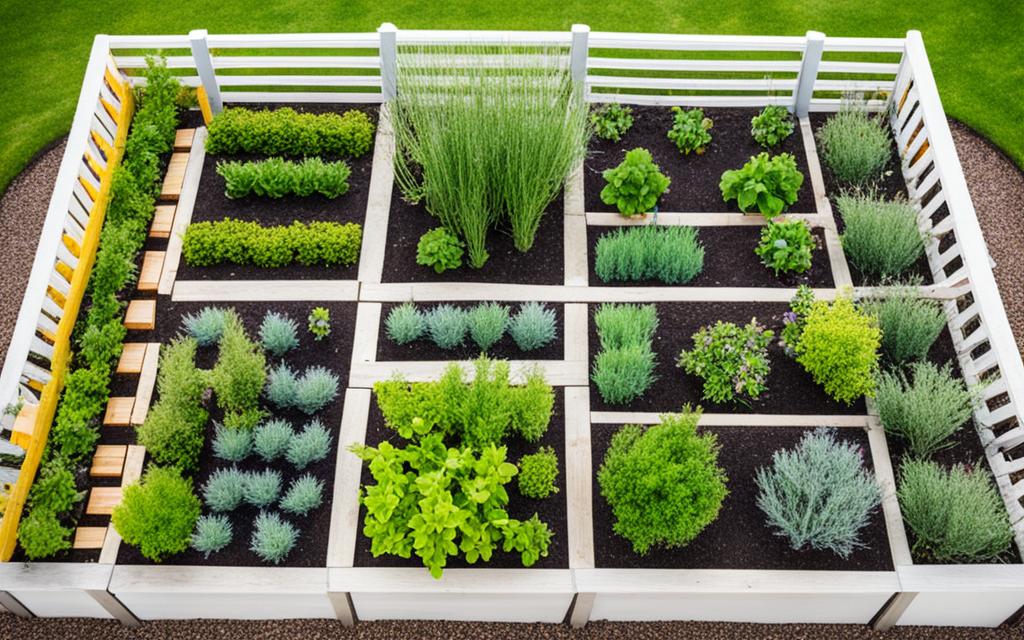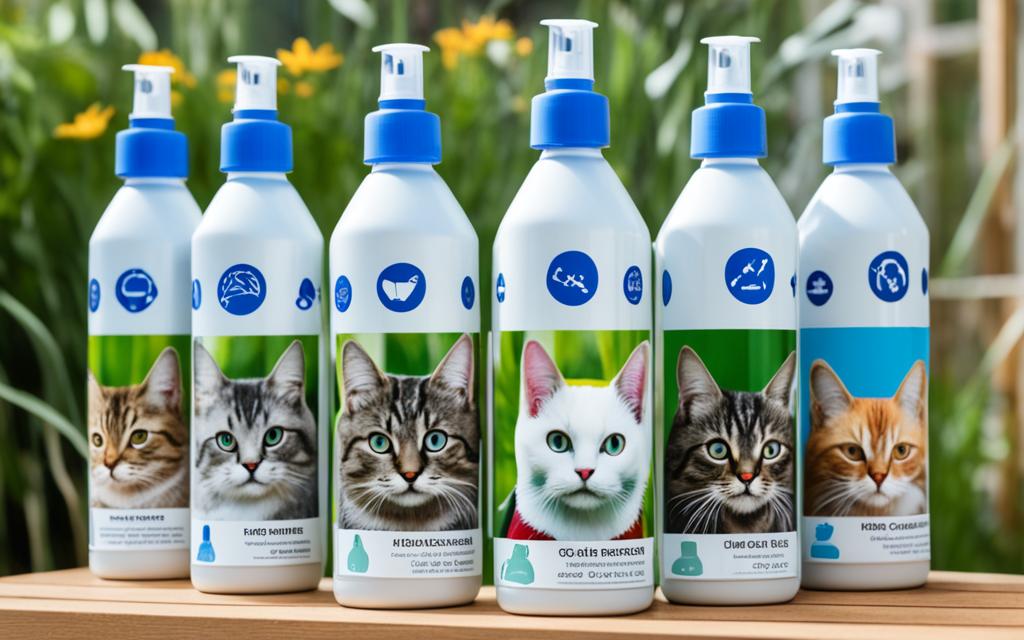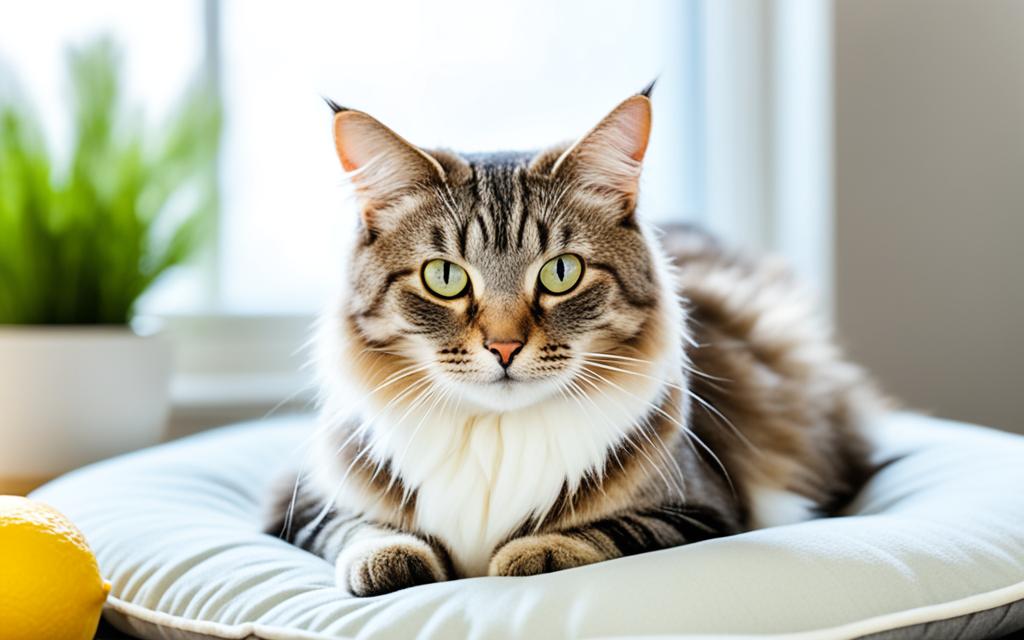How to Keep Cats Off Garden Beds: Effective Solutions

As pet owners and garden lovers, we often find cats causing issues in our garden beds. Whether it’s a neighborhood cat or a pet, they love to dig and explore. We’ll share solutions to help you [keep cats off garden beds], [deter cats from garden beds], and [protect garden beds from cats] for a beautiful, cat-free garden.
One key concern with cats in the garden is the health risks they bring. Cats use soft ground as a litter box, making it a health hazard. Their love of digging can also ruin plants and seeds. This behavior can [prevent cats from digging in garden beds] and [keeping cats out of vegetable gardens], harming young plants alike.
Understanding the Problem with Cats in Garden Beds
Outdoor cats often choose garden soil as their bathroom spot. They mark their territory with scent and continue to return. This causes two main issues: contamination risks from cat feces and potential damage to plants and seeds.
Contamination Risks from Cat Feces
Cat waste might contain harmful germs and parasites, like Toxoplasma gondii. Pregnant women and those with weak immune systems face more risk. Having cat feces in garden beds can endanger the produce’s safety and quality.
Damage to Plants and Seeds
Cats can mess up your garden in several ways. They dig in the soil, step on or uproot plants, and claim places as theirs. These actions can ruin vegetable gardens, flower beds, and pose overall risks to garden plants.
Methods That Don’t Work
Some ways to stop cats from getting into your garden beds just don’t do the job. For example, using plastic forks and sticks, the “scaredy cat plant,” and even eggshells don’t keep cats away. Instead, gardeners find their beds still visited by these furry friends.
Plastic Forks or Sticks
Pushing plastic forks or sticks into the soil is a tip many people know. However, this method doesn’t work well. I tried it, shown in the photo. Unfortunately, the forks I used are now a part of my garden for years to come.
Scaredy Cat Plant (Coleus canina)
The “scaredy cat plant,” also known as Coleus canina, is said to scare cats away. But, it doesn’t always work. Gardeners might still find cats visiting their gardens, even after planting these.
Eggshells
Using eggshells to deter cats is a popular idea. People believe cats avoid sharp edges and rough surfaces. However, eggshells are not a reliable way to keep cats from the garden. Cats often walk over them without any problem.
Short-Term Solutions
Want to keep cats out of your garden beds? to deter them short-term, try spreading scented plant materials. Cut up plants like lavender, rosemary, or citronella and place them around. Or, you can dry and powder these plants for a stronger effect.
Spreading Plant Materials with Strong Scents
For a temporary fix, use sharp mulches like pine cones, bark, or rocks. The rough feel deters cats from going near or on your garden beds. This makes your garden less inviting to them.
Sharp Mulches (Pine Cones, Bark, Rocks)
Another trick is to spread animal or human urine around your garden beds. The scent tells cats the area’s taken, keeping them away. Just know, this method needs to be done again and again to work.
Animal Urine or Human Urine
These short-term ideas can help make your garden beds cat-resistant. But, keep in mind, you’ll need to keep working on them. Regular maintenance is key to their success.
Commercial Repellents: Effectiveness and Limitations
Many homeowners use commercial cat repellents to keep their gardens safe. These products are sold as natural or humane and they’re supposed to scare cats away. But, in reality, they might not work very well.
These cat repellents are often made with strong smells like citrus or garlic. These smells can bother cats at first, but cats are smart. They can get used to the smell and go back to the garden.
There’s also a type you can spray on the soil or plants. This method wants to make the area not fun for cats. But, you have to spray it a lot because rain and time can make it stop working.
| Commercial Cat Repellent | Effectiveness | Limitations |
|---|---|---|
| Scent-based Granules | Moderate, but temporary | Cats may adapt to the scents over time |
| Liquid Spray Deterrents | Moderate, but requires frequent reapplication | Scent can fade or be washed away, leaving the garden unprotected |
| Motion-activated Devices | High, when properly installed and maintained | Can be expensive, and may require professional installation |
Commercial cat repellents might work a bit but not for long. You have to keep using them to keep cats away. It’s better to mix them with other ways to guard your garden against cats.

Claiming Your Space: Marking and Deterrents
To keep cats out of your garden, make it yours. Use your scents to mark it. This tells cats it’s yours, stopping them from ruining your plants.
Using Your Own Hair or Urine
Your hair or urine can tell cats to stay away. Cats avoid places that smell like humans. Put some of your hair from a brush or other places around your garden. You can also use your urine mixed with water. This will create a border cats won’t cross.
Visual and Auditory Deterrents
Use more than just scents to deter cats. Place shiny things like foil or streamers around. These make noise in the wind and scare cats.
Also, use things that make loud sounds or shoot water when they sense motion. These gadgets can keep cats out and protect your garden.
Physical Barriers: Fencing and Netting
Keeping cats away from garden beds works well with physical barriers. We chose two-foot-high plastic fencing for our raised beds. It was a better choice than wire since wire rots fast here. The fencing and netting have made a big difference. Now, cats can’t get into our garden beds.
Motion-Activated Sprinklers
Along with fences, we use motion-activated sprinklers to scare cats away. These sprinklers turn on when they sense movement. They shoot out water, surprising any cats nearby. With both fences and sprinklers, our gardens are cat-free.
Humane Deterrents for Outdoor Cats
At first, setting up a litter box area might sound like the wrong move to avoid cats in your garden. But believe it or not, this can keep them away from your plants. It offers a friendly way to steer cats from your flower beds and veggies.
Creating a Dedicated Litter Box Area
Designating a litter box spot in your yard can steer outdoor cats from using your garden. They’ll have a hidden place to dig and cover their waste. This spot should be quiet and feature fine sand or soil. It’s an inviting alternative to your garden, stopping cats from choosing your beds for their needs.
Providing Alternative Scratching Posts
Aside from a litter box, cats need scratching spots. To protect your plants, offer them sturdy, catnip-infused surfaces. This setup distracts them, keeping your garden green and their needs met.
These steps turn your yard into a cat-friendly space that keeps them from ruining your garden. It’s a way to get along with outdoor felines without sacrificing your garden.
Maintaining a Cat-Free Garden
To keep cats out of your garden, use a variety of methods. This includes watching and cleaning your garden often. Also, use things that cats don’t like. This helps protect your plants from being used as a litter box.
Regular Monitoring and Cleaning
Check your garden beds and nearby areas often. Look for signs like scratch marks, paw prints, and poop. Remove these as soon as you find them, so the smell doesn’t attract more cats. Also, keep your garden clean of leaves and other debris that could hide a cat.
Consistent Application of Deterrents
Use motion-activated sprinklers, fences, and plants that repel cats to keep them away. It’s important to use these things all the time, changing them up to keep cats guessing. This makes your garden a place they don’t want to be.





